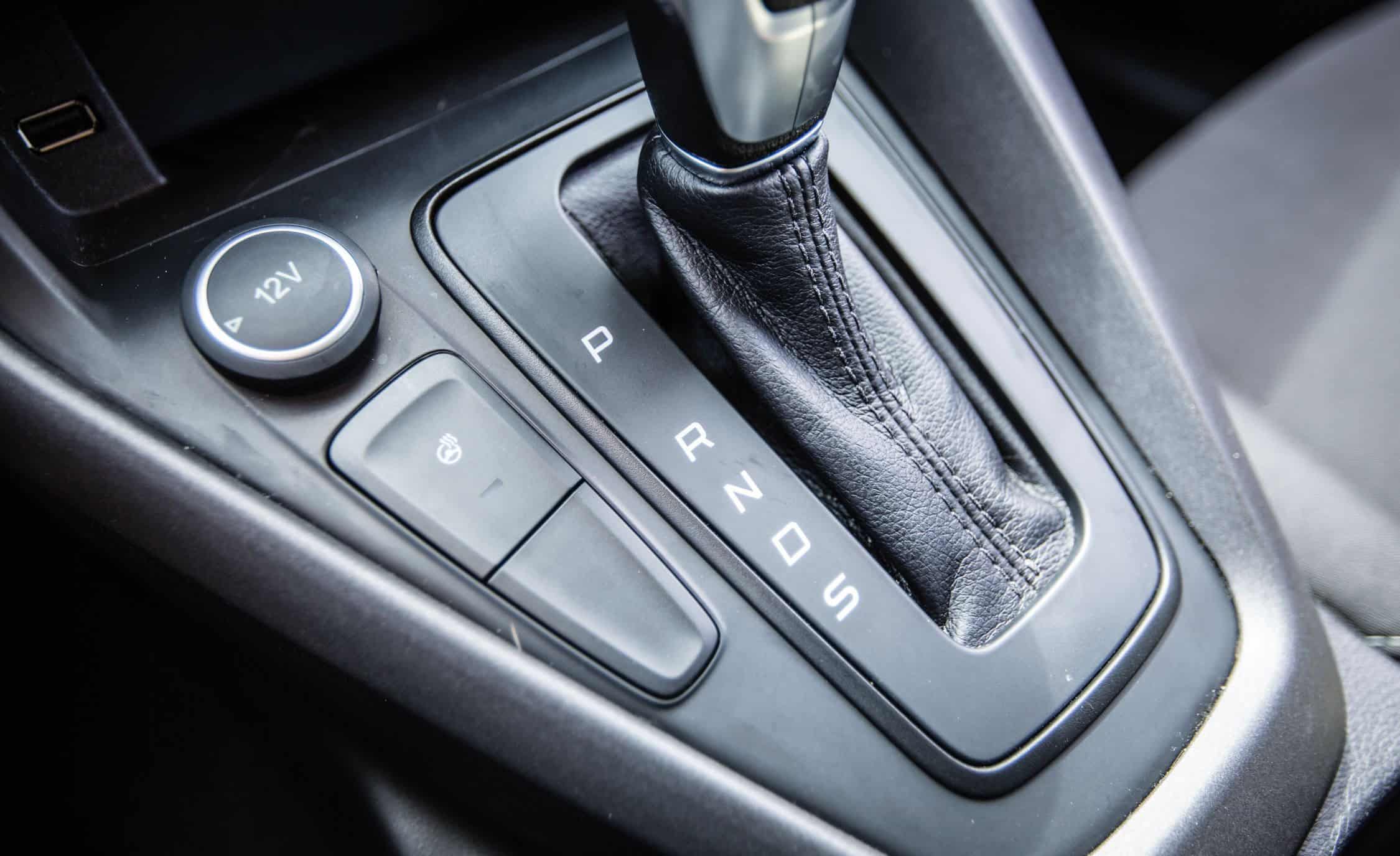Ford Automatic Transmissions: How to Use the Neutral Position
Automatic transmissions have revolutionized the driving experience, making it easier for drivers to operate their vehicles. Like many other automakers, Ford has incorporated automatic transmissions into their vehicles for decades. One crucial component of these transmissions is the “N” or Neutral position. The Basics of Automatic Transmission Shift Positions It’s essential to understand the basic […]
Automatic transmissions have revolutionized the driving experience, making it easier for drivers to operate their vehicles. Like many other automakers, Ford has incorporated automatic transmissions into their vehicles for decades. One crucial component of these transmissions is the “N” or Neutral position.

The Basics of Automatic Transmission Shift Positions
It’s essential to understand the basic shift positions in a Ford automatic transmission:
- P (Park): Used when the vehicle is stationary and the engine is off or idling.
- R (Reverse): Used for backing up the vehicle.
- N (Neutral): Disconnects the engine from the drive wheels.
- D (Drive): Used for normal forward driving.
Some Ford models may include additional positions like Sport mode or manual shift options, but these four are the fundamental positions in all automatic transmissions.
The Purpose of the Neutral Position
The Neutral position in a Ford automatic transmission serves several important functions:
- Disconnecting the engine from the drivetrain: In “N,” the transmission disconnects from the engine, allowing the wheels to rotate freely without engine power.
- Facilitating towing: “N” is often used when the vehicle needs to be towed, as it prevents damage to the transmission during the towing process.
- Allowing the vehicle to be pushed or rolled: In situations where the engine is not running, this gear enables the vehicle to be moved manually.
- Serving as a safety buffer: “N” acts as a buffer between forward and reverse gears, reducing the risk of accidental gear engagement.
When to Use the Neutral Position in Ford Vehicles
While this position has specific purposes, it’s essential to understand when you should use it in Ford vehicles:
- At car washes: Shifting to Neutral in an automatic car wash lets the system pull the vehicle through without engaging the engine.
- When being towed: If a Ford vehicle needs to be towed without a flatbed, placing it in Neutral allows the wheels to rotate freely, preventing transmission damage.
- In case of mechanical failure: If the vehicle experiences a mechanical issue and needs to be pushed, Neutral allows for easier movement.
- During extended stops: Some drivers shift to Neutral during long stops at traffic lights or in heavy traffic.
The Debate: Neutral vs. Drive at Stops
One of the most common questions regarding using “N” in Ford automatic transmissions is whether it’s better to shift to Neutral or stay in Drive when stopped for extended periods. This debate has several aspects to consider:
- Transmission wear: Some argue that leaving the car in Drive at a stop can cause unnecessary wear on the transmission fluid and components. However, modern transmissions, including those in Ford vehicles, are designed to handle this situation without significant wear.
- Fuel efficiency: There’s a misconception that shifting to Neutral at stops saves fuel. In reality, modern Ford engines and transmissions are optimized for fuel efficiency in both Drive and Neutral at stops.
- Response time: Keeping the vehicle in Drive allows for quicker response when it’s time to move again, which can be important in traffic situations.
- Safety: Staying in Drive with the foot on the brake provides more control and quicker reaction times in emergency situations.
Official Ford Guidelines
While Ford doesn’t provide specific guidelines for every situation involving this position, they do offer some general recommendations:
- Use “N” when going through automatic car washes.
- Engage this gear when the vehicle needs a tow (consult the owner’s manual for specific towing instructions).
- For normal driving, including stops at traffic lights, it’s generally recommended to keep the vehicle in Drive with the foot on the brake.
The Role of Neutral in Advanced Transmission Technologies
As Ford continues to innovate in transmission technology, the role of this gear position has evolved:
- Hybrid and electric vehicles: In Ford hybrid and electric models, the Neutral position may function differently due to the unique powertrain configurations. Always consult the specific vehicle’s manual for proper usage.
- Start-Stop technology: Many modern Ford vehicles feature start-stop technology, automatically shutting off the engine at stops to save fuel. This technology works in Drive, eliminating the need to shift to Neutral at stops.
Safety Considerations When Using Neutral
While the Neutral position serves important functions, it’s crucial to use it safely in Ford vehicles:
- Never shift to “N” while the vehicle is in motion, as this can lead to a loss of engine braking and power steering assistance.
- Always ensure the vehicle is at a complete stop before shifting from “D” to “N” or vice versa.
- When in “N” on an incline, always use the brake pedal or parking brake to prevent the vehicle from rolling.
- Be cautious when shifting back to “D” from “N”, especially if the engine RPMs are high, to avoid sudden jerking movements.
The Mechanics Behind the Neutral Position
Understanding how this gear position works in Ford automatic transmissions can help drivers appreciate its function:
- In traditional automatic transmissions, “N” disengages the transmission’s clutches and bands, allowing the input and output shafts to rotate independently.
- For continuously variable transmissions (CVTs) used in some Ford models, Neutral adjusts the pulley system to a state where no power goes to the wheels.
- In Ford advanced dual-clutch transmissions, Neutral disengages both clutches, effectively disconnecting the engine from the drivetrain.
Neutral and the Ford Transmission Control Module
Ford vehicles equipped with electronic transmission control modules use sophisticated software to manage gear shifts and transmission behaviour:
- The control module ensures no power transfers to the wheels while maintaining proper fluid circulation.
- The module also monitors vehicle speed and engine RPM to prevent accidental shifts into Drive or Reverse when the vehicle is moving.
Maintenance Considerations Related to the Neutral Position
While the “N” position itself doesn’t require specific maintenance, its proper use can impact the overall health of a Ford vehicle’s transmission:
- As specified in the owner’s manual, regular transmission fluid checks and changes ensure smooth operation of all gear positions.
- If experiencing any issues with engaging or disengaging this gear, it’s essential to have the vehicle inspected by a certified Ford technician.
- Periodically check the neutral safety switch to prevent the engine from starting unless the transmission is in “N” or Park.
Legal and Regulatory Aspects of the Neutral Position
The use and implementation of this gear position in Ford vehicles, like all automotive manufacturers, is subject to various regulations:
- The Federal Motor Vehicle Safety Standards (FMVSS) require the Neutral position to be between the forward drive and reverse drive positions in automatic transmissions.
- These standards also mandate that vehicles with automatic transmissions have a neutral safety switch to prevent the engine from starting when the transmission is in gear.
Future Trends and the Neutral Position
As automotive technology continues to advance, the role of the Neutral position in Ford vehicles may evolve:
- With the increasing popularity of electric vehicles, which often use single-speed transmissions, the traditional concept of an “N” gear may change.
- Future Ford vehicles may use the “N” position differently as advanced driver assistance systems and autonomous driving technologies evolve.
Learn How to Use the “N” Position in Ford Transmissions
The Neutral position in Ford automatic transmissions serves essential functions in vehicle operation and safety. While its use in everyday driving situations is limited, understanding when and how to use it properly can contribute to the transmission’s longevity and the overall driving experience. As Ford continues to innovate in powertrain technology, the role of Neutral may evolve. Still, its fundamental purpose of disconnecting the engine from the drivetrain remains a crucial aspect of automatic transmission design.
By following Ford guidelines and using the Neutral position appropriately, drivers can ensure the safe and efficient operation of their vehicles. Whether navigating a car wash, preparing for towing, or simply understanding the mechanics of their transmission, knowledge of this gear position is an important aspect of operating a Ford vehicle with an automatic transmission.


